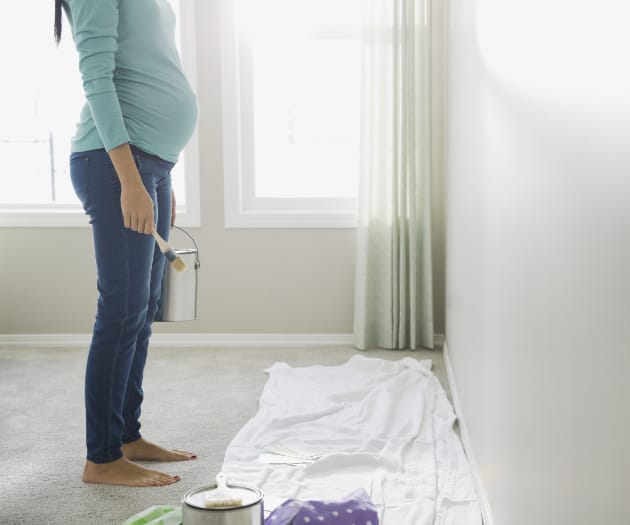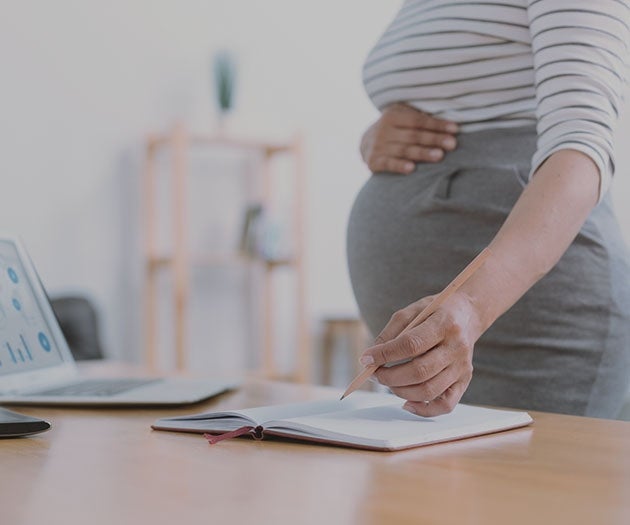Introduction
Families are wonderfully diverse, and most workplaces reflect the differing needs of parents, individuals and couples who take time off to look after children. We hope your place of work is the same. It's so important to take maternity and paternity leave; as it’s a great opportunity to bond as a family!
There are many different types of parental leave and knowing what you're entitled to as a couple or as an individual can be confusing. That's why we've pulled out some of the key answers to all your maternity and paternity leave questions.
Who can take maternity leave?
All pregnant mums-to-be are entitled to 52 weeks maternity leave. The 52 weeks are split into 26 weeks of ‘ordinary’ maternity leave and 26 weeks of ‘additional’ maternity leave. For the first six weeks of your leave, you'll receive 90% of your average weekly salary (before tax) and then £156.66 (or 90% of your weekly wage, whichever is the lowest).
How do I ask for maternity leave?
At least 15 weeks before the week of your baby's due date, tell your employer:
-
that you're pregnant
-
your baby's due date
-
that you want to take maternity leave
-
when you want your maternity leave to start and end (you can change these dates later). Your employer must write to you within 28 days confirming your start and end dates.
Who can take paternity leave?
You don't have to be the biological father of your baby to take paternity leave - Partners, including same-sex partners of someone pregnant, are entitled to up to two weeks statutory leave. That can be taken in separate one-week blocks or two weeks at a time. To get the full entitlement, you must have been working for the same employer for 26 weeks by the end of the 15th week before the week your baby is due. As with maternity leave, let your workplace know your plans at least 15 weeks before your little one is due.
What are the benefits of taking maternity and paternity leave?
There are so many benefits to taking maternity and paternity leave. Shared parental leave can be a great way to share baby care responsibilities and keep income coming in (when you need it most). More importantly, taking time out to be with your new baby is vital for their development and happiness. Taking parental leave is a chance to bond with your new arrival, share the chores and the joy of all those little milestones. Your baby will be happy to have their parents around, and a happy baby normally means happy parents! You can also take time off for antenatal appointments although you will need to meet the criteria.
Do you get maternity leave if you adopt?
Yes, just like maternity leave, statutory adoption leave lasts for 52 weeks. You might have to show your workplace proof that you're adopting, and you must be matched with a child through an adoption agency.
When you and your partner, whether you're heterosexual, same-sex partners and/or civil partners, adopt a child, it's a good idea to decide which of you will take adoption leave and which one will take paternity leave.
You and/or your partner can also take shared parental leave.
What other parental leave is available?
As a parent, you can take additional (unpaid parental leave) to help care for your child. Your entitled to 18 weeks leave for each child and adopted child up to their 18th Birthday. The limit each year is up to four weeks per parent for each child. Leave has to be taken in week blocks rather than individual days. Find out more
What are my rights if I'm having a surrogate baby?
The current surrogacy laws in the UK say that any woman who gives birth is classed as the child's legal mother. If she is married, then her wife or husband is classed as the baby's other parent. For couples using surrogacy, it means the surrogate and her husband/wife will be their child's legal parents. Parental Orders can be applied for once the baby is six weeks old, and you must apply before the baby is 6 months old.
What are my rights when it comes to taking maternal and paternal leave?
While in most cases, people find that their workplace has all the right policies in place and that there are no barriers to your maternity rights for you taking leave to look after your baby. They have a legal duty to follow all the rules and regulations whatever your sexual orientation or family set up, but if you need anything confirmed, check out https://www.gov.uk/employers-maternity-pay-leave or visit https://www.citizensadvice.org.uk/work/rights-at-work/parental-rights/maternity-leave-what-youre-entitled-to-and-how-to-get-it/








